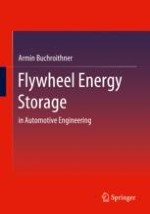2023 | OriginalPaper | Buchkapitel
4. Interaction Between Subsystem and Supersystem of Mobile Flywheel Energy Storage
verfasst von : Armin Buchroithner
Erschienen in: Flywheel Energy Storage
Verlag: Springer Fachmedien Wiesbaden
Aktivieren Sie unsere intelligente Suche, um passende Fachinhalte oder Patente zu finden.
Wählen Sie Textabschnitte aus um mit Künstlicher Intelligenz passenden Patente zu finden. powered by
Markieren Sie Textabschnitte, um KI-gestützt weitere passende Inhalte zu finden. powered by
